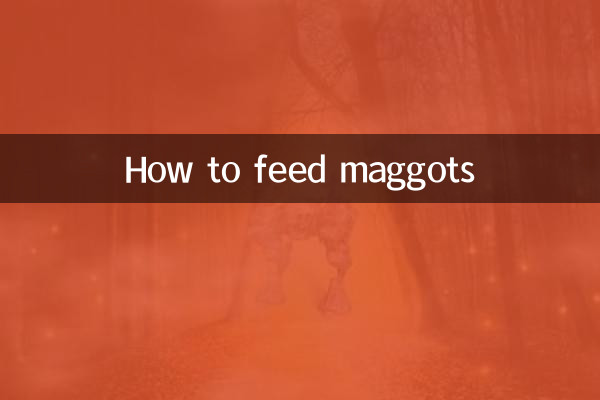How to feed maggots: A complete analysis of hot topics and breeding techniques on the Internet in the past 10 days
Recently, discussions on insect farming and organic waste treatment have become increasingly popular, with “how to feed maggots” becoming a hot topic. This article combines the popular data from the entire network in the past 10 days to provide you with structured analysis from breeding technology, feed selection to application scenarios.
1. Summary of hot topic data in the past 10 days

| Ranking | keywords | Search volume (10,000 times) | Related topics |
|---|---|---|---|
| 1 | Maggot farming | 18.7 | Organic fertilizer/poultry feed |
| 2 | black soldier fly larvae | 12.3 | Food waste disposal |
| 3 | Fly maggot protein | 9.5 | aquaculture feed |
| 4 | live bait | 7.8 | Reptile pet breeding |
2. Core points of maggot feeding
1. Feed selection criteria
According to the latest research from China Agricultural University, the recommended ratios for different development stages are as follows:
| growth stage | protein requirements | Recommended raw materials | Feeding frequency |
|---|---|---|---|
| Juvenile maggot stage | 12-15% | Bean dregs/wheat bran | every 6 hours |
| rapid growth period | 18-22% | Fish offal/rotten fruits and vegetables | every 4 hours |
| mature stage | 15-18% | Mixed fermentation material | every 8 hours |
2. Environmental control parameters
The best breeding conditions announced by Jiangsu Academy of Agricultural Sciences:
| indicator | suitable range | critical threshold |
|---|---|---|
| temperature | 25-30℃ | >35℃ fatal |
| Humidity | 60-75%RH | <50% stop growing |
| pH value | 6.5-7.5 | <5.0 inhibits growth |
3. Hot list of innovative breeding methods
The 5 most popular feeding techniques on Douyin/Kuaishou platforms:
| Technical name | Number of likes (10,000) | Core advantages |
|---|---|---|
| layered fermentation | 32.5 | Save 60% space |
| Bacteria enzyme synergy technology | 28.7 | Conversion rate increased by 40% |
| photoperiod control | 19.3 | Shorten the growth cycle |
4. New trends in industry applications
According to a July report from the Ministry of Agriculture and Rural Affairs:
• The proportion of maggot powder added in livestock and poultry breeding is increased to 8-12%
• Organic farms consume an average of 300 tons of live maggots per hectare per year.
• The purchase price of biopharmaceutical companies reaches 45 yuan/kg (medical grade)
5. Frequently Asked Questions
Q: How to judge whether the feeding amount is appropriate?
A: Observe the thickness of the material layer. The ideal state is 2-3 cm, and it is best to be completely consumed within 24 hours.
Q: What should I do if the feed becomes rancid during fermentation?
A: Immediately add 5% charcoal powder to adjust, and add EM bacteria for remediation.
Through the above structured data analysis, it can be seen that scientific maggot feeding technology is promoting the development of agricultural circular economy. It is recommended that practitioners pay attention to the application of intelligent equipment such as temperature sensors and automatic feeding systems to obtain higher benefits.

check the details

check the details